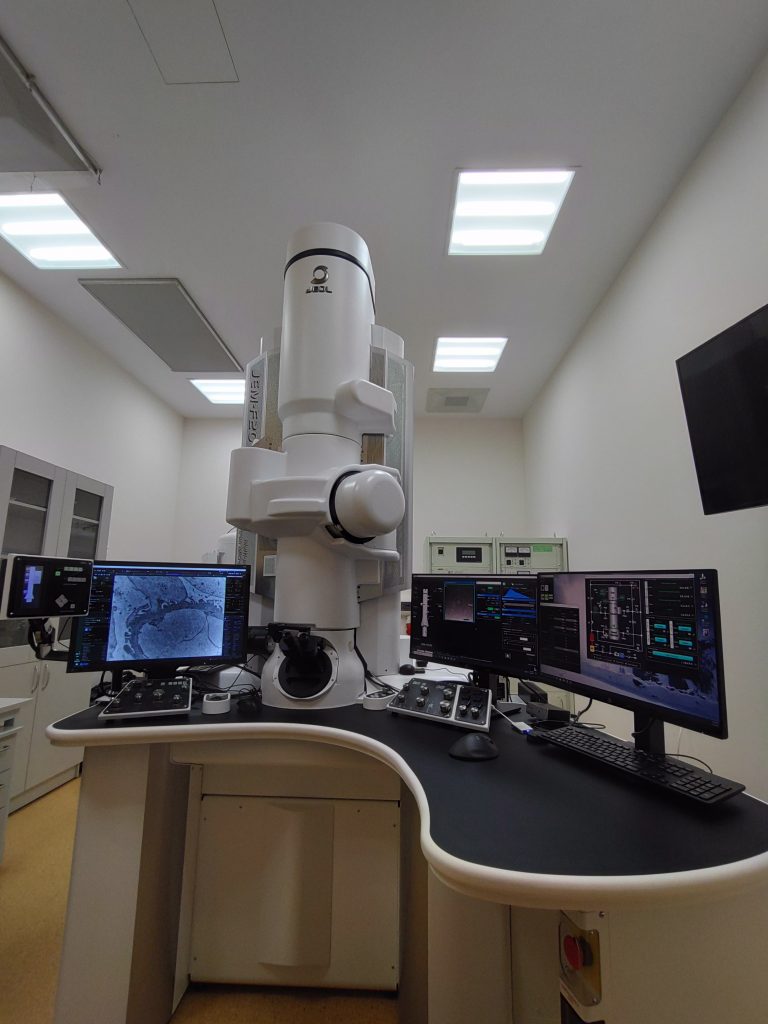The transmission electron microscope (TEM)
uses transmitted electrons as the source of illumination. The image is formed by electrons that pass through the sample. Thus, a TEM is useful for investigating the internal structures of various materials such as cells of plant and animal tissues, bacteria, viruses, and nanomaterials of all kinds. The addition of X-ray microanalysis in the STEM mode enables to identify the chemical composition of samples by detecting the characteristic X-rays that are emitted from the samples when they are bombarded with electrons.
In addition, specific proteins can be localized in samples using colloidal gold labeled antibodies.

Staff:
- dr Edyta Reichman-Warmusz, PhD
- prof. Romuald Wojnicz, MD, PhD
- Jeol JEM-F200 CF-CR (Cold Field Emission Gun and Accelerating voltages up to 200kV),
- TEM resolution (at 200 kV):
- Point image 0.23 nm,
- Lattice Image 0.1 nm.
- STEM resolution (at 200 kV): HAADF image 0.19 nm.
- TEM magnification (at 200 kV):
- MAG ×1000 to 1.5M,
- LOWMAG ×50 to 60k.
- STEM magnification (at 200 kV):
- MAG ×20k to 150 M,
- LOWMAG ×200 to 15 K.
- Detectors:
- EDS, BF, HAADF.
- Cameras:
- TVIPS XF416 ES,
- EMSIS MegaVIEW G3 2.8 MEGAPIXEL.
- Software: TEMCenter, AnalysisStation, Analysis Manager for EDS, SerialEM, RECORDER TOMO for TEM and STEM, COMPOSER I COLORIST.
Laboratory services
The laboratory performs routine transmission electron microscopy study including for patients diagnostic purpose. In addition, we perform all electron microscopy specimen preparation techniques including cryofixation, freez substitution, high pressure freezing, immunogold labeling and CEMOVIS/CETOVIS. We have just started in the cryo-electron microscopy focused on applied research.
Electron microscopy sample preparation is generally a drop-off service. However, if you prefer to perform your own imaging we can provide training.